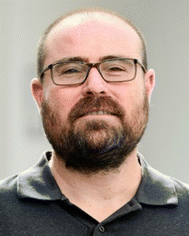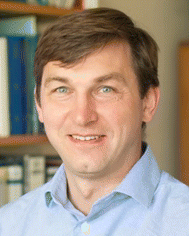Catalysis on the move
Asier
Unciti-Broceta
 *ab and
Evgeny
Rebrov
*ab and
Evgeny
Rebrov
 *cd
*cd
aEdinburgh Cancer Research, Institute of Genetics and Cancer, University of Edinburgh, Edinburgh EH4 2XR, UK. E-mail: asier.ub@ed.ac.uk
bCancer Research UK Scotland Centre, UK
cSchool of Engineering, Department of Chemical Engineering and Chemistry, University of Warwick, Coventry CV4 7AL, UK. E-mail: e.rebrov@warwick.ac.uk; e.rebrov@tue.nl
dEindhoven University of Technology, P.O. Box 513, 5600 MB Eindhoven, The Netherlands
Abstract
Recent years have witnessed an expansion in the use of catalytic processes beyond chemical labs, together with the emergence of improved catalysts, methodologies and reactors for more standard applications. To share and discuss these advances, the 2nd International Conference on Unconventional Catalysis, Reactors & Applications (UCRA-2), held in Leamington Spa, UK in September 2022, brought together the very best research and innovation in catalysis, chemical engineering, and their applications. Surrounded by beautiful views of the Warwickshire countryside, old friends and colleagues enjoyed a rich scientific programme that covered from the synthesis of unconventional catalysts and manufacturing methods, to photo/electro/plasma-activated catalysts and processes, and catalysis in unconventional environments such as living human cells.
One of the main topics of the conference was the electrification of chemical processes, which requires catalysts that can work directly with renewable energy sources. Electrocatalysis, photocatalysis and plasma catalysis are the three main classes of these novel catalytic technologies. They are all part of the development of so-called renewable energy-driven (or solar-driven) chemistry and energy.1 Used at the laboratory and bench scales for decades, their applications have grown exponentially in recent years, with the scaling up of these technologies to the industrial scale to realise new process solutions. Although photocatalysis and plasma catalysis are conceptually different, they have many similarities in their reaction mechanisms, for example in the decomposition of formic acid or CO2.
Plasma technologies are already being used in the field of gas purification and conversion to remove low concentrations of volatile organic compounds and NOx. In sustainable process technology, plasma catalysis plays a more important role; however, the technology is still at the low readiness level, mostly at TRLs 2–4. Examples discussed at the UCRA conference included CO2 splitting, CO2 hydrogenation, dry reforming of methane to produce syngas or oxygenates, and ammonia synthesis from N2 and H2. These applications still face some challenges, such as the need for higher energy efficiency and product yield, as well as the need to develop better catalysts tailored to plasma conditions. This requires a thorough insight into the underlying mechanisms of plasma–catalyst interaction, which are still far from being understood. The insights from thermal catalysis are undoubtedly helpful, but other processes also come into play, such as the interaction of plasma-generated vibrationally or electronically excited species with the catalyst surface. Due to the similarities with photocatalysis, findings from that domain are of crucial importance, although the conditions are different, and the findings cannot be transferred directly from one domain into the other.
The introduction of novel photo- and plasma-catalytic processes on an industrial scale offers an opportunity for distributed chemical production and process intensification. At the same time, it brings new challenges for reactor design and the development of unconventional, potentially disruptive catalysts and processes. Also, the periodic modulation of temperature, flow rate or other process parameters in chemical reactors leads to significant improvement in reactant conversion and selectivity, thus introducing a further element to improve the catalytic performance over stationary conditions.2
There are thus close links between the concepts of unconventional catalysis, reaction engineering and reactor design and there is a strong need to accelerate research across these domains in order to meet the challenges of the electrification of the chemical industry, to develop new models of sustainable production and to minimise the use of fossil fuels. The establishment of these cross-domain links was the most important goal of the UCRA-2 conference.
This cross-journal themed collection aims to give an overview of some of the highlights of the conference. The set of papers offers insights into the global landscape, challenges, and future prospects within the realm of catalysis and reactor engineering. The work of Sandip De et al. describes a machine learning (ML) approach to identify key performance-related descriptors in the indium oxide-catalysed transformation of CO2 into methanol (https://doi.org/10.1039/D3CY00148B). Their ML algorithms were able to predict the performance of new catalysts, e.g., the Pt–In system. This work showcases the scope and impact that artificial intelligence can provide to address the needs of industrial catalyst and process development. Cox et al. demonstrated an improved performance under transient operation in an oscillatory baffle flow reactor (https://doi.org/10.1039/D3RE00065F). They developed a predictive model that was used to maximise the mixing efficiency by determining the level of plug flow within the reactor. For his work, Dr. Cox received the best presentation award in the UCRA-2 conference. Horri et al. demonstrated steam electrolysis as an efficient approach for producing green hydrogen (https://doi.org/10.1039/D3ME00011G). They developed a lithium–bismuth–copper gadolinium doped ceria composite electrolyte with enhanced electrochemical characteristics. Rebrov et al. studied the effect of electrode configuration in non-oxidative methane coupling in a plasma jet reactor (https://doi.org/10.1039/D2RE00536K). They concluded that the CH4 conversion was tripled with a sharp angle of the electrode. Castaño et al. investigated hydrogen production by ammonia decomposition in a membrane catalytic reactor and concluded that Ru- and Co-based catalysts combined with a Pd–Au permeation membrane provide very high hydrogen yield (https://doi.org/10.1039/D2RE00408A). They modelled the membrane reactor by solving fundamental equations of mass transport and chemical kinetics in a shell-tube geometry following a previously developed approach.3 Towards the goal of improving renewable energy sources, Kulkarni et al. used a combined computational–experimental approach to study the rate-determining step in ammonia decomposition by ruthenium catalysts (https://doi.org/10.1039/D3CY00055A). The study provides critical insights into this relevant hydrogen production process.
Bioorthogonal catalysis is another emerging field where transition metals are taking the new role of providing miniaturised factories to manufacture imaging agents and drugs at the site of the disease, when and where needed, with the aim to increase the efficiency and reduce the side effects of anticancer therapies and diagnostics. Towards this direction, Palmans and coworkers report in this themed collection the use of novel single-chain polymeric nanoparticles (SCPNs) as bioorthogonal reactors (https://doi.org/10.1039/D2ME00173J). By controlling the hydrophobicity and the ligands incorporated into the SCPNs, these nanodevices are capable of entrapping Pd(II) catalysts and perform catalytic reactions under conditions compatible with life. The authors showed that the physicochemical characteristics of the interior of the nanoreactor have enormous influence on the type of dye and drug precursors to be uncaged. Understanding this will be essential to design effective nanocatalyst/prodrug pairs that can be used in medicine.
These excellent works are exemplars of recent trends in catalysis, which not only aim to improve well-established processes in industry, but also expand into new areas and applications, such as healthcare and climate. Out-of-the-box ideas and unconventional thinking continue to inspire researchers attracted by the wonders of catalysis. We look forward to the third edition of UCRA, which will be held in Warsaw, Poland, on 18–21 September 2024 and will include another amazing line-up of speakers, including Nobel Laureate Prof. Frances Arnold and NASA director and 5-time astronaut Prof. Jeff Hoffman.
References
- A. Bogaerts, et al. Challenges in unconventional catalysis, Catal. Today, 2023, 420, 114180 CrossRef.
- T. Ellwood, et al. Process Intensification in Photocatalytic Decomposition of Formic Acid over a TiO2 Catalyst by Forced Periodic Modulation of Concentration, Temperature, Flowrate and Light Intensity, Processes , 2021, 9, 2046 CrossRef.
- F. R. García-García, et al., High purity hydrogen production by low temperature catalytic ammonia decomposition in a multifunctional membrane reactor, Catal. Commun., 2008, 9, 482–486 CrossRef.
| This journal is © The Royal Society of Chemistry 2024 |


